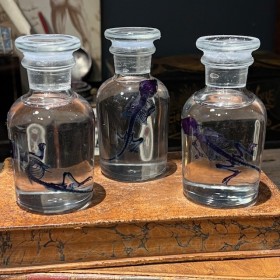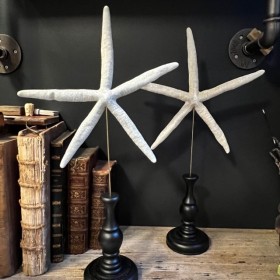

Diaphany: Common mouse - Mus musculus in jar - Biological preparation - Large model
Diaphanization of Common mouse - Mus musculus
Biological preparation
The aim of diaphanization is to render the tissues transparent through a chemical process, and specific dyes are used to highlight the skeleton.
You can see the bones through the flesh!
Description
Diaphanization of a Common mouse skeketon: Mus musculus
The aim of diaphanization is to make the skeleton transparent so that it can be observed.
The tissues are made transparent by a chemical process, and specific dyes are used to highlight the skeleton.
You can see the bones through the flesh!
This is mainly used for animals that are too small to be prepared for osteology in the conventional way, or to study ossification sequences, for example.
The jar does not contain formalin, because the specimens are fixed before they are prepared.
They are then placed in these flasks filled with pure glycerine and thymol crystals, whose function is to preserve the tissues and combat mould.
The animals are not killed to end up in these jars; they are often foetuses or stillborn animals, etc.
Bottle height: 8.5cm Diameter: 4cm
All specimens are different









































